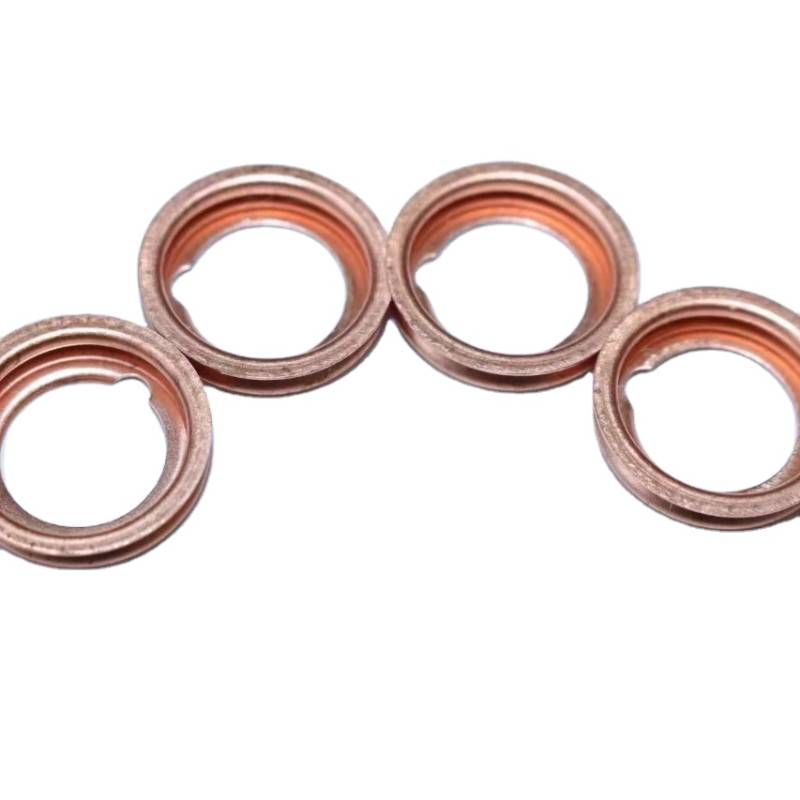Understanding the Importance of Engine Oil Drain Plug Maintenance and Replacement for Vehicle Longevity
Understanding the Engine Oil Drain Plug Importance and Maintenance
The engine oil drain plug may seem like a small, insignificant component of your vehicle, but it plays a crucial role in maintaining the health and efficiency of your engine. The drain plug is essentially a threaded plug that secures the oil pan at the bottom of the engine. Its primary function is to provide a means for draining the engine oil during routine maintenance procedures, such as oil changes.
Function and Importance
Regular oil changes are vital to the longevity and performance of an engine. Engine oil lubricates the moving parts, reduces friction, and helps to dissipate heat. Over time, engine oil degrades due to various factors, including oxidation and contamination from dirt and metal particles. This degradation can lead to reduced engine efficiency and, ultimately, engine failure if not addressed timely.
The oil drain plug facilitates this essential maintenance task. By removing the plug, which is often made of aluminum or steel, technicians can allow the old, dirty oil to drain completely from the engine's oil pan. This ensures that the replacement oil added is free from contaminants, thereby promoting optimal engine performance.
Design and Construction
Typically, the drain plug features a hexagonal or square design, allowing easy access with a wrench. Some models have a built-in magnet to attract metal shavings, which can help identify internal wear issues. The seal around the drain plug is equally important, as it prevents leaks and ensures that the oil remains contained in the oil pan when the vehicle is operational.
engine oil drain plug

The material and design of the drain plug must withstand significant heat and pressure from the engine. Therefore, manufacturers take great care in selecting durable materials and employing precision engineering in its design.
Maintenance and Replacement
While the drain plug is designed to last for many oil changes, it is not immune to wear and tear. Over time, the threads may strip, or the seal may weaken, leading to potential oil leaks. Regularly inspecting the drain plug for signs of damage or corrosion is essential. If you notice any oil spots underneath your vehicle or if the drain plug feels loose, it may be time for a replacement.
When changing the oil, always ensure that the drain plug is securely tightened once the old oil has been completely drained. However, be cautious not to overtighten as this can strip the threads or crack the oil pan.
If you find yourself needing to replace the drain plug, it’s essential to choose the correct size and specification for your specific vehicle model. Using mismatched components can lead to ineffective sealing and potential oil leaks.
Conclusion
In conclusion, while the engine oil drain plug may not be the most glamorous component of your vehicle, its importance cannot be overstated. Regular maintenance of the drain plug, alongside routine oil changes, is vital for your engine's health and performance. Take the time to inspect this small yet significant element, and you will extend the life of your vehicle while ensuring smoother operation on the road. Whether you're a DIY enthusiast or just someone who wants to maintain their car, understanding and caring for the engine oil drain plug is an essential step in vehicle maintenance.
-
Understanding the Front Main Engine Seal: Purpose, Maintenance, and Installation
News Jul.29,2025
-
Understanding O-Rings and Seal Rings: Types, Applications, and Custom Solutions
News Jul.29,2025
-
Understanding Crankshaft Oil Seals: Rear Seals, Pulley Seals, and Their Role in Engine Integrity
News Jul.29,2025
-
The Importance of Front and Rear Crankshaft Seals in Engine Performance and Oil Management
News Jul.29,2025
-
Crank Oil Seals: Functions, Types, and Cost Considerations in Engine Maintenance
News Jul.29,2025
-
A Comprehensive Guide to O-Rings and Seals: Types, Materials, and Global Applications
News Jul.29,2025
-
Mastering Diesel and Performance Engine Maintenance: A Guide to Critical Oil Gaskets
News Jul.28,2025
Products categories















